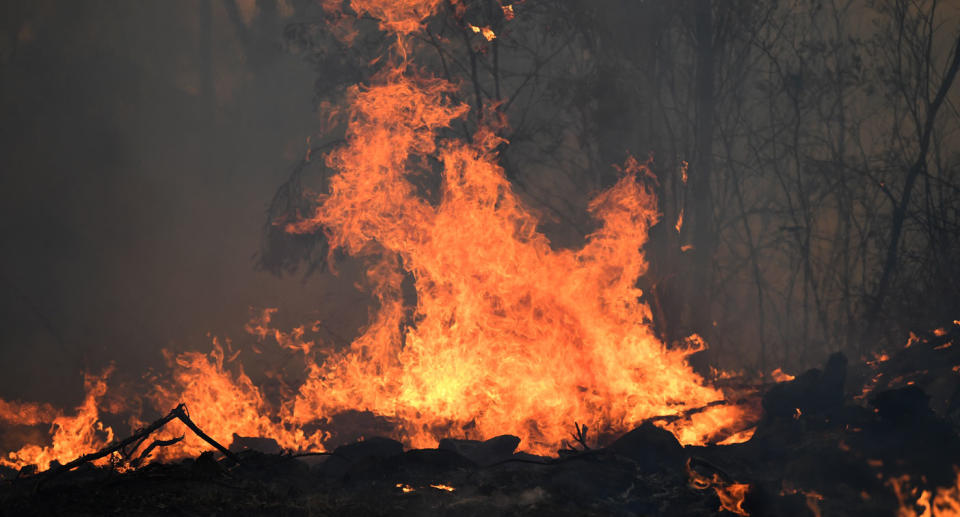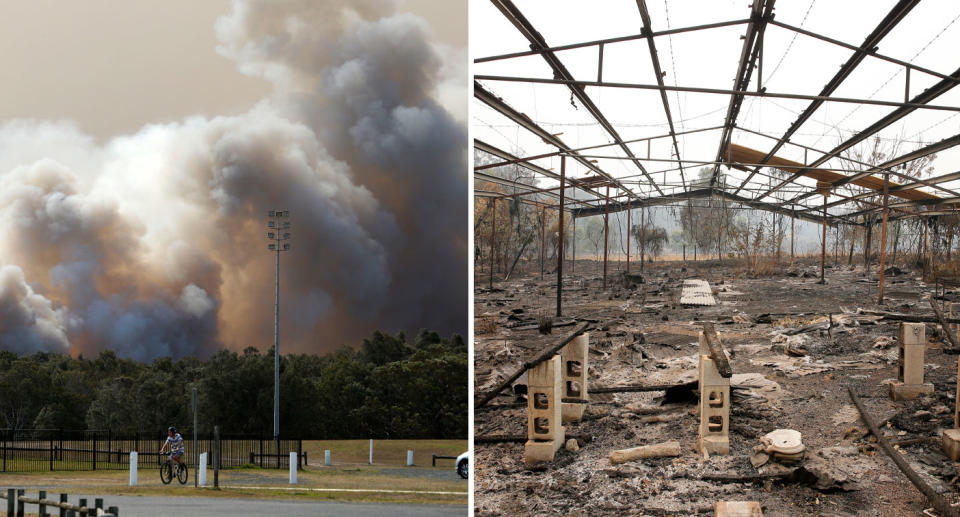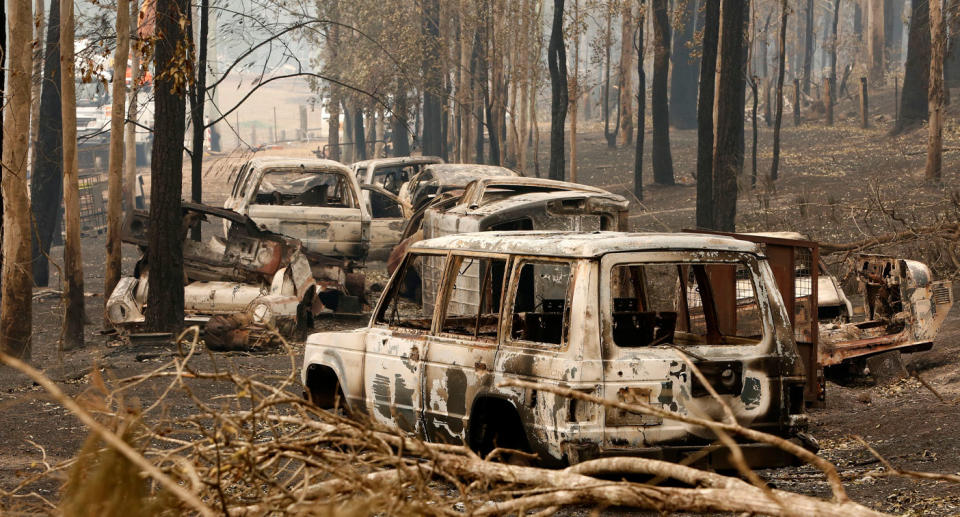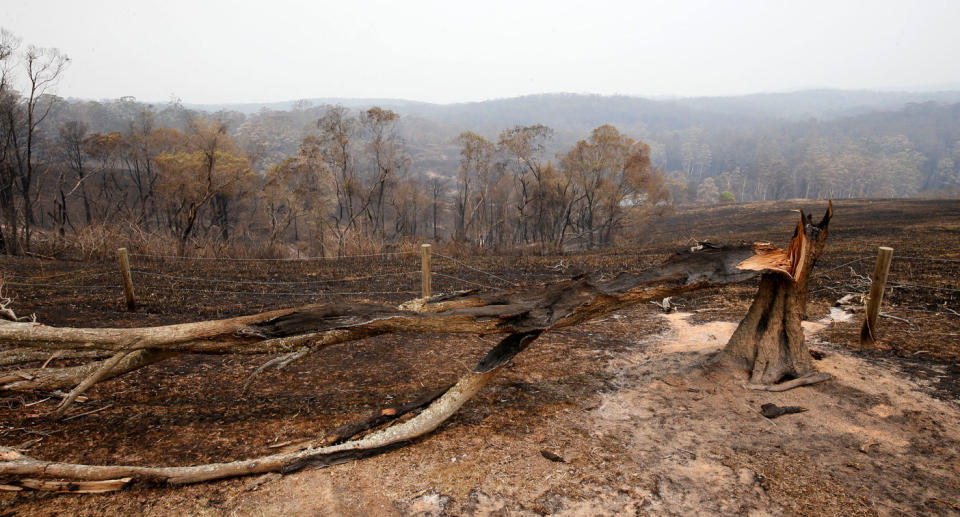'Catastrophic' fire danger for Sydney - but what does it mean and where will be impacted?
“It’s where people die.”
That’s the stark message NSW Rural Fire Service Commissioner Shane Fitzsimmons continues to reiterate as Sydney faces an unprecedented “catastrophic” fire rating.
It’s the first declaration of its kind for the state capital since a new rating system came into effect 10 years ago.
“We’ve got to keep reminding ourselves that catastrophic is off the conventional scale," Mr Fitzsimmons said.
On Monday, a seven-day state of emergency was declared in NSW and a statewide total fire ban enforced for Monday and Tuesday with “very dangerous” conditions expected on Tuesday.
Temperatures in Sydney will reach a high of 37C and will be paired with strong winds – unfavourable conditions for the exhausted full-time and volunteer firefighters across the state already stretched to their limits.
Emergency Services Minister David Elliott on Monday warned residents were facing what “could be the most dangerous bushfire week this nation has ever seen”.

The fires have so far claimed three lives and destroyed more than 150 homes.
The Hunter region and the Illawarra and Shoalhaven areas, which are north and south of Sydney, are also rated catastrophic.
Which Sydney areas are affected?
There are 35 local government areas across the Greater Sydney area declared danger areas.
Areas in Sydney’s inner west and west that are classified as at-risk include Burwood, Canada Bay, Strathfield, Blacktown, Campbelltown, Canterbury-Bankstown, Cumberland, Fairfield, Liverpool, Parramatta, Penrith, as well as some inner western Sydney suburbs.
In the city’s east, Randwick, Sydney, Waverley and Woollahra are areas declared dangerous, while in the north and north west, 12 more areas have been highlighted by authorities.
They include Central Coast, The Hills, Hawkesbury, Hunters Hill, Ku-ring-gai, Lane Cove, Mosman, North Sydney, Northern Beaches, Ryde and Willoughby.

South and south west areas including Camden, Georges River, Kogarah and Sutherland are declared danger zones, as are places in The Hunter including Cessnock, Dungog, Lake Macquarie, Singleton and the Upper Hunter.
People in the Illawarra and Shoalhaven areas south of Sydney should also be on high alert for bushfires, authorities say.
How serious is the bushfire threat?
The worst Australian bushfire tragedy in recent times was the Black Saturday fires of Victoria in February 2009 which killed 173 people and destroyed thousands of homes. It would have carried a catastrophic rating under the present system.
The fire danger tomorrow is now expected to be worse than originally forecast. The Illawarra/Shoalhaven is now forecast to experience a Catastrophic fire danger, as will Greater Sydney and Greater Hunter. More info here: https://t.co/RQyA5UAi8x #nswrfs #nswfires pic.twitter.com/1xlwByvpMz
— NSW RFS (@NSWRFS) November 11, 2019
Fire danger warnings currently in place across NSW flag a similar level of destructive force.
The catastrophic rating for Greater Sydney is “unprecedented” but there have been one or two warnings for other parts of the state in the past decade.
What should you do if you live in a danger zone?
Advice issued by the RFS for people living in areas of catastrophic fire danger states residents should stay away from bushfire prone areas and instead head to large towns or cities.
The RFS said hundreds of schools in high risk areas were closed, and parents of students would be notified of closures. They were told to act fast if they were contacted.
People unable to leave their area were urged to identify a safe location nearby, such as a Neighbourhood Safer Place.
What schools in danger areas are closed?
Hundreds of schools are closed Monday and Tuesday across the state, with the education department releasing an exhaustive list on its website.
This includes Bundeena Public School, Deepwater Public School, Glenbrook Public School, Hornsby Heights Public School, Windsor Park Public School and Cape Byron Rudolf Steiner, Byron Bay.
NSW will experience very dangerous fire conditions tomorrow, with Catastrophic fire danger forecast for Greater Sydney and Greater Hunter. Lives and homes will be at risk. A Total Fire Ban is in place for the all of NSW. More info here: https://t.co/6Rk3vcj6uv#nswrfs #nswfires pic.twitter.com/CfqNsxKJLs
— NSW RFS (@NSWRFS) November 11, 2019
Parents and students were encouraged to download NSW Rural Fire Service phone applications to receive alerts and stay up to date with current warnings.
How many fires are burning in NSW?
Exhausted firefighters are battling up to 60 bushfires from the mid north coast to the Queensland border.
Mr Fitzsimmons has advised people living in areas facing the worst to leave now.
“My advice (is to) not be there. Leaving early is the safest option,” he told reporters on Monday.
Mr Fitzsimmons said in such conditions fires can spread so quickly that people find themselves in severe danger before help arrives.
“We cannot guarantee a fire truck at every home, we cannot guarantee an aircraft will be overhead every time a fire is impacting on your property, we cannot guarantee that someone will knock on the door and give you a warning that there's fires nearby and we certainly cannot guarantee that despite our best efforts the technological tools available will deliver you a message in time,” he said.
“For heaven's sake stay away from bushland,” Premier Gladys Berejiklian.
“The catastrophic weather conditions mean that things can change very quickly.”

“You might think you're OK and a few minutes later you won't be. Please heed all the messages you receive. Tomorrow is not the day to be complacent,” she said Monday.
The RFS emphasises that people living outside the catastrophic regions also face serious danger.
“There is a risk in all bushland areas, stretching from Bega all the way to Byron, from the Victorian border to the Queensland border,” a spokesperson said.
Related
'Catastrophic' danger for NSW residents as deadly bushfires rage on
Deputy prime minister slams 'inner-city lunatics' over bushfire debate
Noosa residents told to flee, while 'horrendous beast' rages in NSW
“Across all fire grounds now we have more than 970,000 hectares that has been burnt or is burning. That is a massive area almost more than the last three fire seasons combined.”

How will the bushfires affect your health?
NSW Health warned people in Sydney and the Hunter to take precautions with smoke blowing south from fires on the state's mid-north coast forecast to cause poor air quality on Monday afternoon.
The best way to reduce smoke exposure is to stay inside with the doors and windows shut, the department's Director of Environmental Health Dr Richard Broome said.
“For most people, smoke causes mild symptoms like sore eyes, nose and throat,” Dr Broome said in a statement on Monday.
“However people with existing lung and heart conditions like asthma, emphysema and angina are more likely to be sensitive to the effects of smoke.”
“People with these conditions should avoid outdoor physical activity when there's smoke around.”
-With AAP
Do you have a story tip? Email: newsroomau@yahoonews.com.
You can also follow us on Facebook and Twitter, download the Yahoo News app from the App Store or Google Play and stay up to date with the latest news with Yahoo’s daily newsletter. Sign up here.


